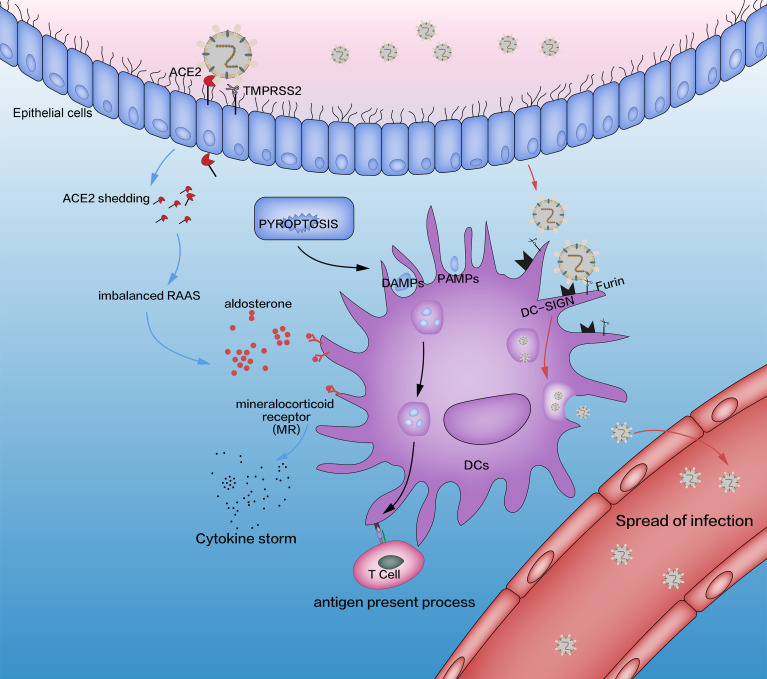Figure 1.
Interaction between SARS-CoV-2 and DCs (schematic). The three pathways affected by SARS-CoV-2 are pyroptosis (black lines), imbalanced RAAS (blue lines), and DC-SIGN (red lines). The adaptive immune system is induced by pyroptosis, which is activated by SARS-CoV-2. In addition, SARS-CoV-2 combines with the ACE2 receptor through its spike protein (S), which is activated by TMPRSS2. This process causes an imbalance in the RAAS through the shedding of ACE2 and releases excessive amounts of aldosterone, which promotes the release of proinflammatory cytokines in DCs through MRs. SARS-CoV-2 impacts DCs directly by DC-SIGN, a receptor which has critical roles in the recognition of viruses (e.g., HIV, Ebola, dengue, cytomegalovirus) and other pathogens (e.g., Leishmania species, Candida albicans, Mycobacterium tuberculosis, Streptococcus pneumoniae, Aspergillus fumigatus). Although SARS-CoV-2 replication in lung cells is well-documented, a similar process has not been confirmed in alveolar DCs. Some researchers have suggested such a replication based on triggering aberrant production of proinflammatory cytokines/chemokines and inducing the spread of SARS-CoV-2 infection, as is the case with SARS-CoV and MERS-CoV, but other scholars have ruled out SARS-CoV replication in human DCs. RAAS, renin–angiotensin–aldosterone system; DCs, dendritic cells; TMPRSS2, transmembrane serine protease 2; MRs, mineralocorticoid receptors; DC-SIGN, dendritic cell-specific intercellular adhesion molecule 3-grabbing non-integrin.

